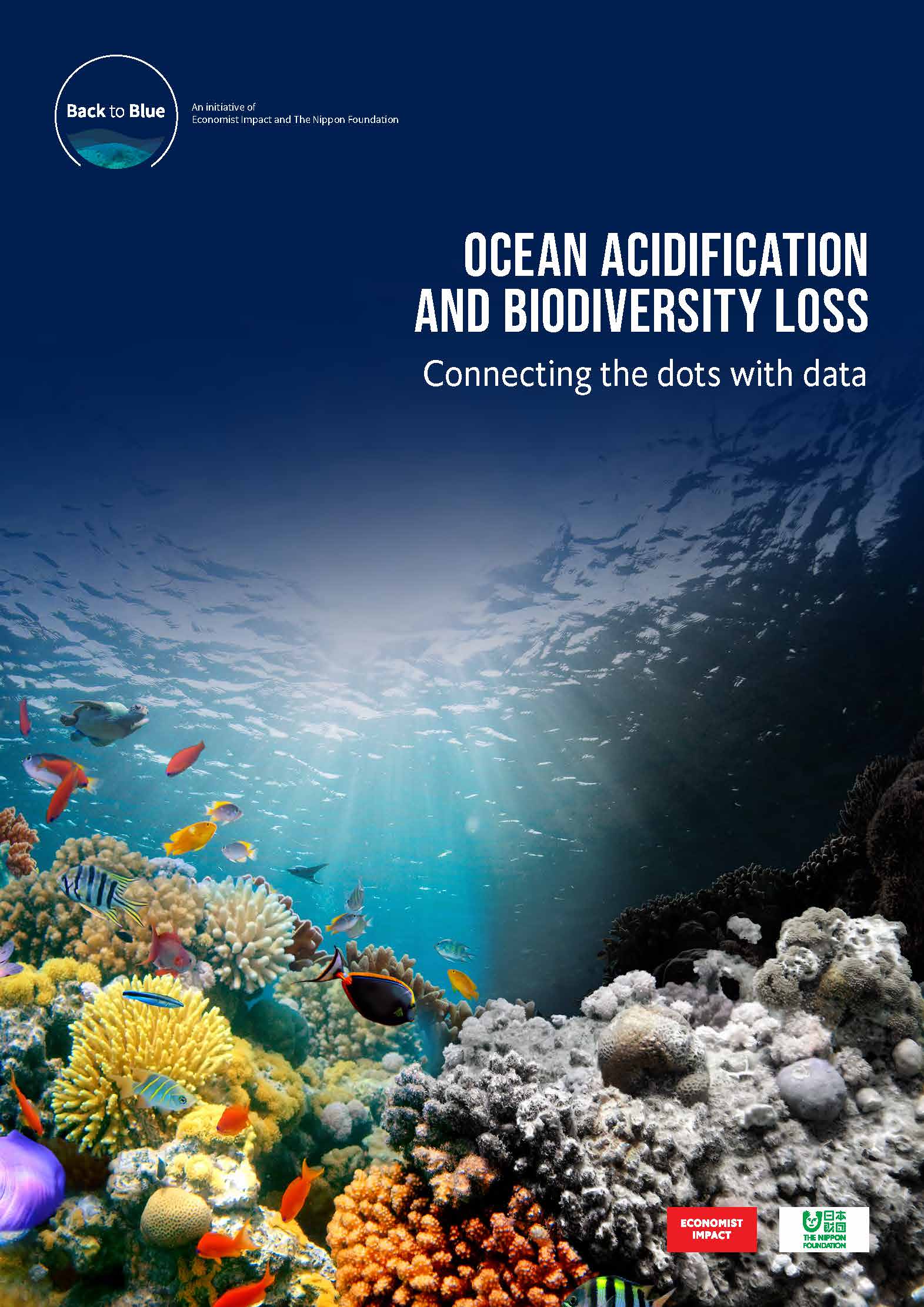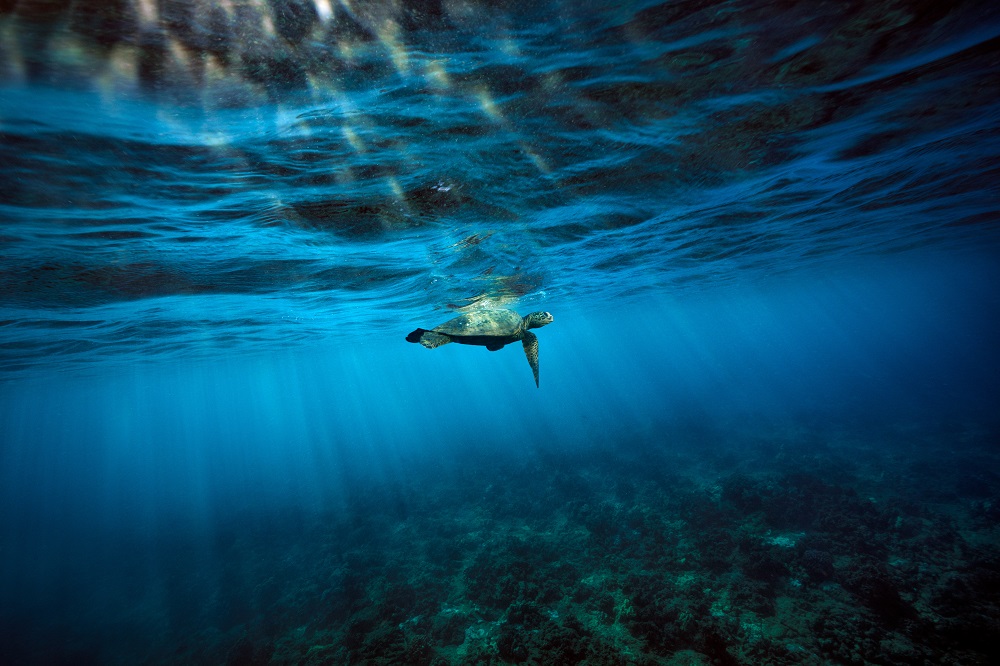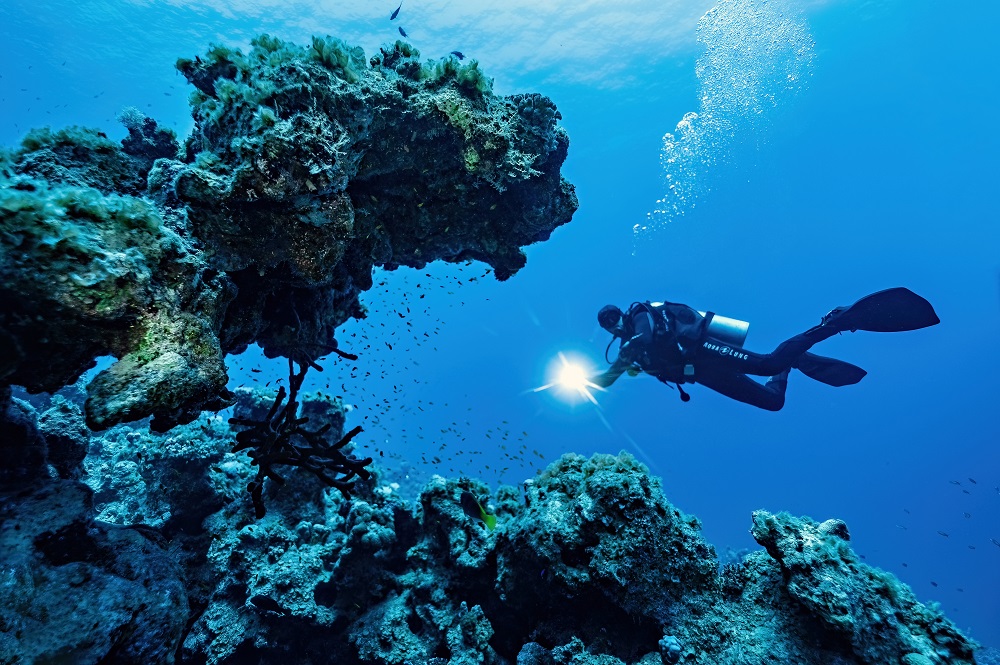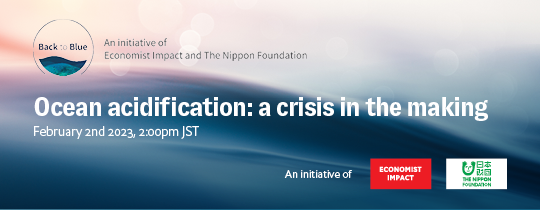About the report
Ocean acidification and biodiversity loss: Connecting the dots with data is a report written by Economist Impact for Back to Blue, an initiative of Economist Impact and The Nippon Foundation. The purpose of this report is to highlight the need for ocean scientists to prove causal links between ocean acidification (OA) and damage to marine species, and the challenges involved in doing so.
Summary
The world is living through a biodiversity crisis. The rapid pace at which animal and plant species have declined in recent decades has led some experts to declare that another mass extinction is under way. What distinguishes this from previous periods of accelerated biodiversity loss are its causes. Whereas naturally occurring events—some sudden and cataclysmic, others more gradual—were the triggers in pre-historic times, human actions are the root cause of species decline today. They include over-hunting, over-fishing and over-farming, but potentially the most devastating in the long term is climate change brought about by our unrelenting carbon dioxide (CO2) emissions.
The impacts of emissions-induced climate change are readily evident in the world’s oceans, perhaps most vividly in the decline of warm water coral reefs caused by warming. Excess CO2 emissions—more than the oceans can safely absorb—are putting many other marine species under direct threat, such as several forms of plankton and shellfish. Those excess emissions also cause ocean acidification (OA), which changes seawater chemistry in ways that make it difficult for many organisms to survive or thrive.
Scientists understand the malign connection between OA and changes to ocean chemistry and biological processes. Many have highlighted the biodiversity loss that will result from OA, and the follow-on harm it will cause to marine ecosystems and the communities that rely on them for food and livelihoods. Policymakers and international organisations are generally aware of the threat that OA poses. The UN Convention on Biological Diversity (CBD) has mandated member countries to actively combat it, and many are putting action plans in place for that purpose. At national, regional and local levels, however, where action is most vital, competing priorities too often deprive those plans of resources and impetus.
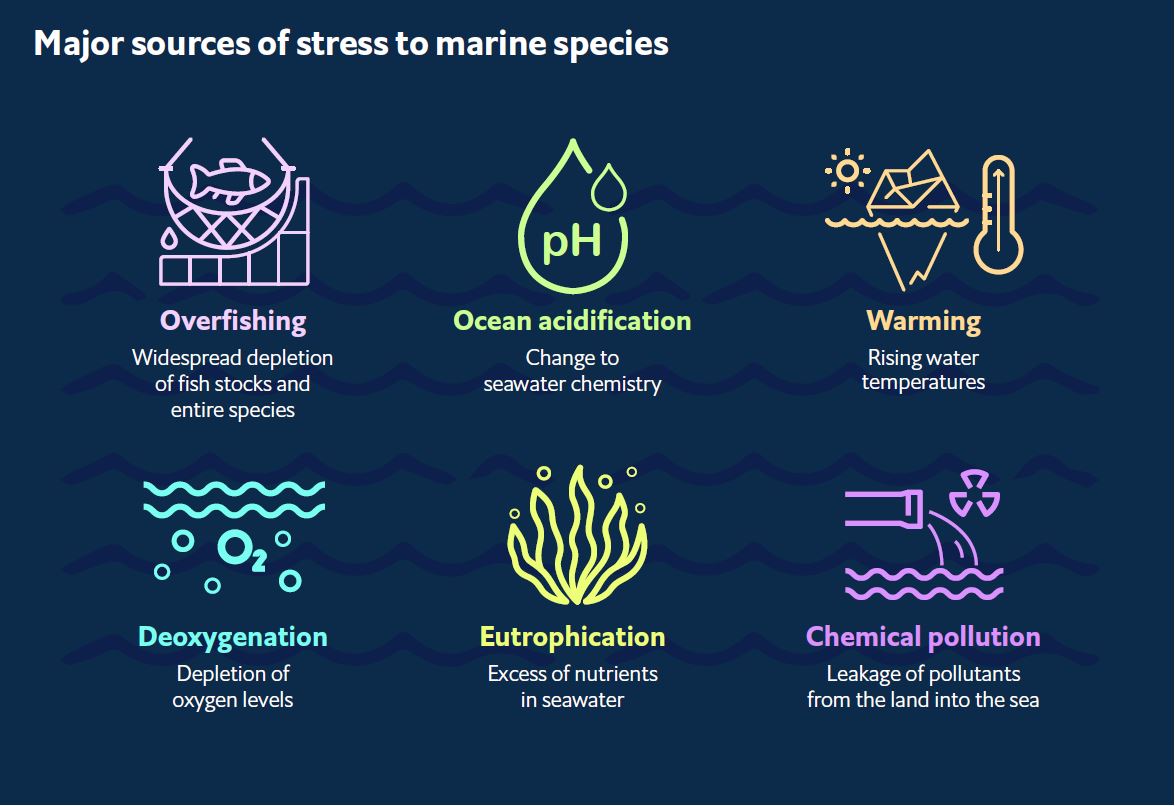
Ocean experts advocating for action against OA worry that their efforts are not creating sufficient urgency among policymakers. OA’s effects are not easy to see, unlike other manifestations of climate change. Therefore, scientists are seeking to provide incontrovertible evidence by demonstrating causality between OA and species decline. Doing so will perform another service: making it easier to determine whether OA is or is not the major stressor on marine life in specific environments, reducing the chances that remedial actions are misdirected and cause unintended harm.
Proving causality cannot be done through laboratory research alone. It requires extensive data gathering in the field, where OA’s impact on organisms can be observed in real (not simulated) environments. It also demands much closer co-ordination between researchers monitoring ocean chemistry and those monitoring biological processes— activities that thus far have been unconnected. Although decades of data gathering may be needed before some correlations are proven, the ocean experts pressing for a new approach to research believe many correlations will become manifest in the next few years.
This report discusses how current ocean research approaches can be adapted to yield such correlations. And while decades may be required for some findings to be confirmed, the report also highlights opportunities to demonstrate causality today—environments where the impacts on biodiversity can be viewed in isolation from other stressors. When it comes to prodding policymakers into action, such results could bear fruit sooner rather than later.
Key takeaways
- Earlier Back to Blue reports highlighted the existential dangers that OA pose to marine life and ecosystems as well as actions that some governments are taking to combat it. This report discusses OA in the context of biodiversity loss and highlights the need for more integrated research to better document OA’s role in it.
- Well-intentioned initiatives to combat OA often flounder at national, regional and local levels due to competing priorities. Documenting causality between OA and species decline will generate additional urgency among policymakers to act.
- Within individual marine environments, isolating OA’s influence on change to biological processes will also help reduce the chance of actions being taken that cause unintended damage. In some environments, other stressors may be the primary cause of harm to organisms.
- Research to determine OA’s impact on marine organisms must move beyond laboratories to incorporate much wider data gathering in the field. That should involve closer co-ordination between chemical and biological monitoring efforts.
- A group of scientists are championing a new approach to integrating chemical and biological monitoring that would involve, among other steps, adopting of common indicators. This approach would facilitate work to definitively link OA to changes in biological processes.
1. The marine biodiversity crisis
Global biodiversity is in an accelerated state of decline. An estimated 28% of the world’s animal and plant species are currently under threat of extinction, according to the International Union for Conservation of Nature (IUCN). This figure has increased steadily each year since the mid-1990s as the IUCN has increased its assessment efforts.
The ecological crisis resulting from the decline of species is even more dire, according to David Obura, chair of the Intergovernmental Science- Policy Platform on Biodiversity and Ecosystem Services and founding director of CORDIO East Africa, an oceans research organisation. “It is species’ interactions that define how ecosystems function,” he says. “When species become too rare, or decline below a certain point, the functions they perform may cease to exist, and long before they become extinct.” This, says Mr Obura, puts under threat those ecosystems’ contributions to people.
“When species become too rare, or decline below a certain point, the functions they perform may cease to exist, and long before they become extinct.”
– David Obura, chair of the Intergovernmental Science- Policy Platform on Biodiversity and Ecosystem Services and founding director of CORDIO East Africa, an oceans research organisation
The main causes of biodiversity loss today are linked to human actions. On land, the drivers include agricultural expansion, deforestation, over-hunting and the introduction of invasive species. In coastal waters and the open ocean, over-fishing is a major cause, as are, close to shores, agricultural run-off and chemical pollution. A common driver both on land and in water is climate change caused by the unrelenting growth of CO2 emissions since the dawn of the Industrial Age.

Climate-related biodiversity loss in the oceans is already catastrophic. “Coral reef systems, for example, are collapsing around the world,” says Pepe Clarke, oceans practice leader at WWF International. It is a well-documented calamity. There was a roughly 50% decline in the world’s coral reef cover between 1957 and 2007. A consequence of that loss has been a reduced abundance of coral reef fish. Global catches of such fish peaked in volume in 2001 at around 2.3 million tonnes, after which they began to decline. And catch per unit of effort (CPUE, an “effort” being the weight of fish taken per hour of trawling, the number of fish taken per thousand hooks or another similar measure) has declined steadily since 1971. This manifestation of marine biodiversity loss particularly affects less developed countries, especially small island developing states where coral reef fish are a major source of nutrition for inhabitants and income for fishing communities. “Biodiversity loss always hits poor countries and communities the hardest,” says Mr Obura. “Their natural ecosystems are declining, and they lack the wealth to help them cope and adapt.”
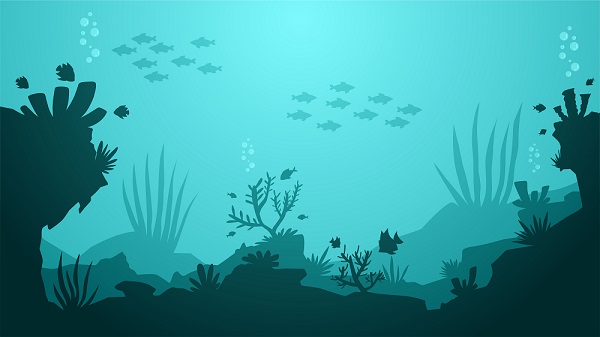
50%
There was a roughly 50% decline in the world’s coral reef cover between 1957 and 2007. A consequence of that loss has been a reduced abundance of coral reef fish.
Less familiar and less documented are declines in marine species that are critical links in ocean food chains. An example is coccolithophores, a type of phytoplankton at the base of food chains that is a key producer of carbonate, a chemical that higher-level species use to build shells and skeletons. One study of coccolithophore populations in the Mediterranean Sea found progressive depletion in 27 of their species in terms of cell concentration and diversity.
OA: a likely suspect
Almost certainly a contributor to this and other examples of marine biodiversity loss is OA. OA is a direct result of CO2 emissions from burning fossil fuels for heating, power generation, transport and other human activities. The ocean absorbs between 20% and 30% of the carbon released into the atmosphere each year. Carbon forms a natural part of many marine biological processes, and many species use it to aid their development. Its absorption from the atmosphere, and its sequestering in these processes over long timescales, also helps to mitigate global warming. But as more carbon is released into the atmosphere, the oceans can’t sequester it quickly enough. When oceans have excess carbon, this usually leads to a lower pH and higher acidity.
But as more carbon is released into the atmosphere, the oceans can’t sequester it quickly enough. When oceans have excess carbon, this usually leads to a lower pH and higher acidity.
The malign effects of OA are easiest to see in shellfish and other calcifying organisms in weakening shells and skeletons. “The problem is much bigger than this, however,” says Sam Dupont, a senior lecturer in the Department of Biological and Environmental Sciences at the University of Gothenburg. “If organisms are exposed to conditions they’ve never experienced before, which is what OA does, there is a cost in the energy the organisms must expend in order to cope.” Many will not have access to this energy, which is when the damage becomes evident. According to Mr Dupont: “First they grow slower, the amount of eggs they produce declines, and ultimately when the cost is really too high, they start dying.”
“If organisms are exposed to conditions they’ve never experienced before, which is what OA does, there is a cost in the energy the organisms must expend in order to cope.”
-Sam Dupont, a senior lecturer in the Department of Biological and Environmental Sciences at the University of Gothenburg
A prime example of the damage OA can cause emerged in the US North-west in 2007-08, when oyster hatcheries in Oregon and Washington experienced large-scale losses of oyster larvae. Scientists found the cause to be a rise in the acidity of the hatchery waters. Another victim of OA harm is the shelled pteropod, a species of zooplankton that is a source of food for larger organisms, including salmon and whales. Pteropods’ shell dissolution has been observed to be rapid in waters with high concentrations of CO2 and low concentrations of aragonite (a mineral needed for shell and skeleton production)—together a sure indicator of OA.
High-level recognition, insufficient action
The international community appears to recognise the gravity of OA’s threat to biodiversity. COP 15 of the CBD, held in December 2022, set 23 targets to be achieved by 2030 to help stem biodiversity loss and restore natural ecosystems. Target 8 calls for actions to “minimise the impact of climate change and ocean acidification on biodiversity and increase its resilience through mitigation, adaptation and disaster risk reduction”.
By enshrining this target in an international treaty, the UN has formally acknowledged a connection between OA and biodiversity loss and obligated member countries to take actions to combat OA. To meet Target 8, countries will need to inject OA considerations into their biodiversity legislation, mandate national action to reduce OA’s impacts, set specific targets for achieving the latter and monitor progress for achieving them.
To meet Target 8, countries will need to inject OA considerations into their biodiversity legislation, mandate national action to reduce OA’s impacts
Although limited in number, national and regional governments are beginning to take the above measures. At the time of writing, 13 government-level OA action plans are in existence, according to the OA Alliance (formally known as the International Alliance to Combat Ocean Acidification).
Why aren’t there more? As we explained in an earlier report, one reason is a lack of funding and other resources needed just to draft an action plan, much less to implement and monitor one. Even for governments that can muster the resources, the need to address other pressing marine challenges, such as over-fishing and chemical pollution, often pushes OA lower down the priority list. “We know what needs to be done, but it’s hard convincing policymakers to do it,” says Mr Dupont. “It’s difficult to generate urgency by showing them that some species are likely to disappear in 20 years.”
Convincing policymakers should be easier when ocean scientists can prove beyond the shadow of a doubt that OA is a direct cause of the demise of species.
Back to Blue is an initiative of Economist Impact and The Nippon Foundation
Back to Blue explores evidence-based approaches and solutions to the pressing issues faced by the ocean, to restoring ocean health and promoting sustainability. Sign up to our monthly Back to Blue newsletter to keep updated with the latest news, research and events from Back to Blue and Economist Impact.
The Economist Group is a global organisation and operates a strict privacy policy around the world.
Please see our privacy policy here.
THANK YOU
Thank you for your interest in Back to Blue, please feel free to explore our content.
CONTACT THE BACK TO BLUE TEAM
If you would like to co-design the Back to Blue roadmap or have feedback on content, events, editorial or media-related feedback, please fill out the form below. Thank you.
The Economist Group is a global organisation and operates a strict privacy policy around the world.
Please see our privacy policy here.




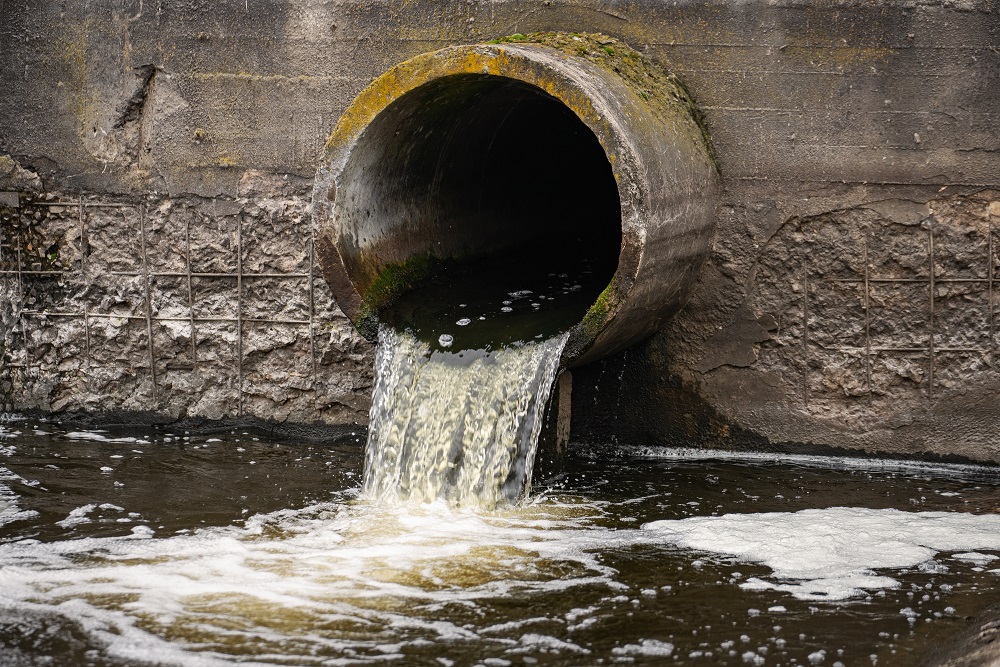 The scourge of untreated wastewater
The scourge of untreated wastewater Slowing
the chemical tide: safeguarding human and ocean health amid
chemical pollution
Slowing
the chemical tide: safeguarding human and ocean health amid
chemical pollution Hazardous chemicals in plastics - the discussions at INC
Hazardous chemicals in plastics - the discussions at INC







